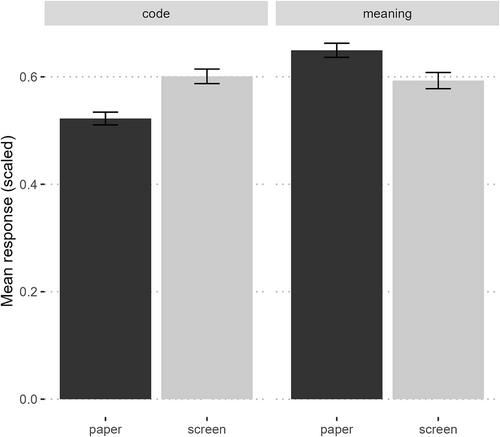Drawing attention to print or meaning: How parents read with their preschool-aged children on paper and on screens
Abstract
Background
Shared reading is an important opportunity for parents and children to connect and learn, which can support later independent reading skills. Much of the research to date has examined shared reading as parents read physical print books with their children. This research has demonstrated that parents tend to engage in more activities that emphasise the meaning of the stories over the code (i.e., print). Here, we examine the focus of shared reading when parents are reading with their children on paper versus on a digital device and whether this differs across the preschool years.
Methods
A total of 253 parents of children aged 0–5 years completed an online self-report questionnaire. Parents reported on the frequency of engaging in meaning- versus code-related activities during shared book reading on paper and on screen with their youngest child. We conducted a linear regression analysis contrasting code- versus meaning-related activities on paper versus screen modality with age as a continuous variable.
Results
Key to our objectives, parents reported engaging in meaning-related activities more frequently during shared reading on paper versus on screens and in code-related activities more frequently during shared reading on screens than on paper. These effects did not differ across age, although overall, parents reported engaging slightly more frequently in shared reading activities in general when their child was older.
Conclusions
The findings show that parents are engaging with their children differently as they read together on paper versus screens. Consistent with prior research, we found that activities emphasising the meaning of stories dominate shared paper book reading experiences in the preschool years. Critically shared reading on screens tips this balance, with parents reporting more code-related activities. These patterns identify the learning opportunities enabled by the affordances of shared reading on screens.


 求助内容:
求助内容: 应助结果提醒方式:
应助结果提醒方式:


